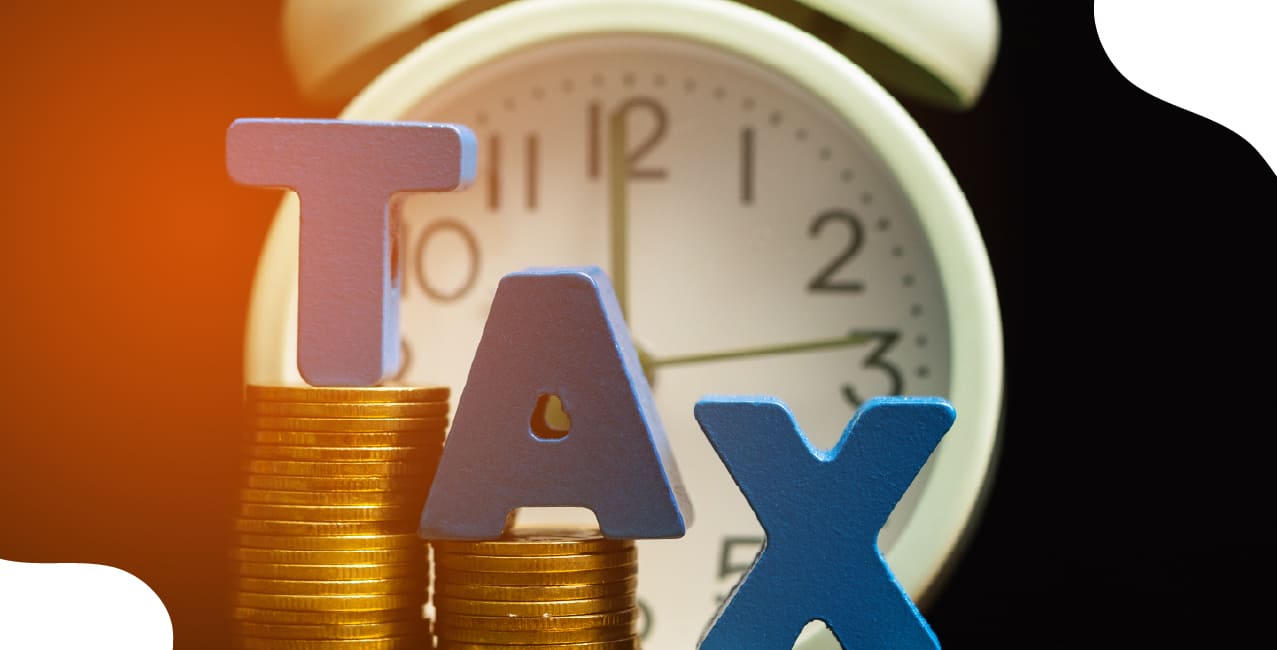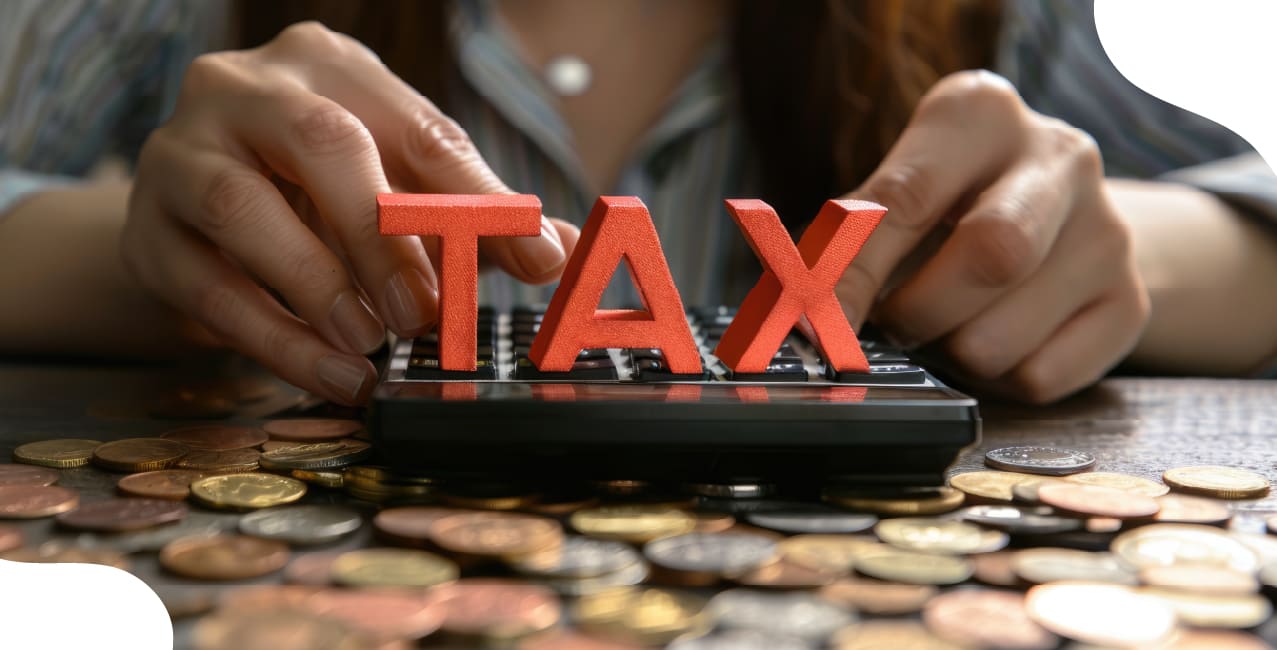
Author
LoansJagat Team
Read Time
6 Min
22 Sep 2025
Depreciation Rates FY 2025-26 -As Per Income Tax Act
Depreciation rate refers to the percentage by which an asset’s value reduces yearly due to usage, wear and tear, or obsolescence. It helps businesses account for the decline in value of their fixed assets over time.
Let’s understand this using Ravi’s example. Ravi buys machinery for his workshop worth ₹5,00,000. The machinery depreciates at a rate of 10% annually. This means the machine’s value will decrease by 10% annually, and the reduced value will be shown in his accounts.
Here’s how the depreciation looks over 3 years:
This table shows how depreciation gradually lowers the asset’s value, helping Ravi estimate future worth and plan replacements wisely.
Understanding the Concept of Block of Assets
Under the Income Tax Act, depreciation is not calculated on each asset. Instead, it is applied to a block of assets. A block of assets is a group of fixed assets that fall under the same category and carry the same rate of depreciation.
Read More - Section 32 of the Income Tax Act – Depreciation Rules Unlocked
These assets are divided into two types:
- Tangible assets like buildings, machinery, furniture, and plants
- Intangible assets such as patents, copyrights, licences, trademarks, franchises, or any business rights
To form a block, the assets must have a similar nature, use, and life span. Also, they must belong to the same depreciation rate category.
Once grouped, these assets lose their identity. For tax purposes, only the total written-down value (WDV) of the block is used to calculate depreciation. This simplifies the process and ensures consistency in the treatment of similar types of assets.
Essential Conditions to Claim Depreciation under the Income Tax Act
To claim depreciation under the Income Tax Act, certain key conditions must be met, these are:
Section 32, Income-tax Act, 1961
Depreciation is claimed on the block-of-assets basis and reduces the Written Down Value (WDV) for future years.
Section 32 (ownership requirement), Income-tax Act, 1961
Only assets owned (fully or partly) by the taxpayer qualify for depreciation. Lessees or others without ownership generally cannot claim depreciation.
Section 32 (business use), Income-tax Act, 1961
Depreciation is allowed only for the portion of the asset used for business or profession. If an asset is partly for personal use, depreciation must be apportioned to the business use.
Section 38, Income-tax Act, 1961
When premises or assets are not exclusively used for business, Section 38 allows the Assessing Officer to determine and limit deductions (including depreciation) to the fair business proportion.
Finance Act, 2021 (amendment), Income-tax Act, 1961
Goodwill was excluded from the block of assets and is no longer eligible for depreciation; land has never been depreciable. This amendment applies from FY 2020–21 / AY 2021–22.
Provision since AY 2002–03 (deemed allowance)
From Assessment Year 2002–03 onward, depreciation is treated as deemed allowed for WDV computation even if not claimed in the profit & loss account; the WDV is adjusted accordingly.
Let’s understand this with an example:
Example:
Ravi and Meera jointly own office furniture worth ₹1,00,000 (50% each). It’s used 70% for business.
So, both Ravi and Meera can claim ₹3,500 each as depreciation.
Meaning of Written Down Value (WDV) of Assets
Under Section 32(1) of the Income Tax Act, depreciation is calculated on the Written Down Value (WDV) of an asset at a prescribed rate. WDV refers to the value of an asset after deducting the depreciation already claimed. If you bought the asset in the current year, its actual cost becomes the WDV. But if you purchased it in an earlier year, then WDV is the actual cost minus the depreciation you have already claimed under the Act.
Depreciation Amount Allowed
Depreciation Rates for FY 2025–26 (Most Common Assets)
Depreciation Rates Chart as per the Income Tax Act (FY 2025–26)
The Income Tax Act sets fixed depreciation rates for different types of assets. These rates help reduce taxable profits by accounting for wear and tear. Taxpayers must apply the correct rate based on the asset’s nature and usage during the year.
Also Read - IndusInd Bank to Boost Retail Loans & MSME Assets, Expand Retail Liabilities in FY26
Part A – Tangible Assets
1. Buildings
2. Furniture and Fittings
3. Plant and Machinery
4. Ships
Part B – Intangible Assets
Conclusion
For the financial year 2025–26, the Income Tax Act allows businesses and professionals to claim depreciation on various assets at specific rates. These rates depend on the type of asset and how it is used.
Tangible assets like buildings, machinery, vehicles, and furniture, as well as intangible assets such as trademarks and licences, all have clearly defined depreciation rates. The government uses these rates to help calculate the decrease in asset value over time, which helps reduce taxable income.
Taxpayers must apply the correct rate as per the rules and ensure the assets are used for business or professional purposes.
FAQ’s
1. Who can claim depreciation under the Income Tax Act?
Any taxpayer who owns and uses an asset for business or professional purposes can claim depreciation.
2. Which method is commonly used to calculate depreciation?
The Income Tax Act mainly uses the Written Down Value (WDV) method to calculate depreciation.
3. What is the depreciation rate for computers in FY 2025–26?
The rate for computers and computer software is 40%.
4. Can I claim depreciation on intangible assets?
Yes, you can claim 25% depreciation on intangible assets like licences, patents, and trademarks.
5. Is depreciation available for temporary structures?
Yes, you can claim 40% depreciation on temporary wooden or similar structures.
Other Related Pages | |||
About the Author

LoansJagat Team
‘Simplify Finance for Everyone.’ This is the common goal of our team, as we try to explain any topic with relatable examples. From personal to business finance, managing EMIs to becoming debt-free, we do extensive research on each and every parameter, so you don’t have to. Scroll up and have a look at what 15+ years of experience in the BFSI sector looks like.

Quick Apply Loan
Subscribe Now
Related Blog Post

LoansJagat Team • 22 Sep 2025
_of_Income_Tax_Act.jpg)
LoansJagat Team • 22 Sep 2025

LoansJagat Team • 22 Sep 2025